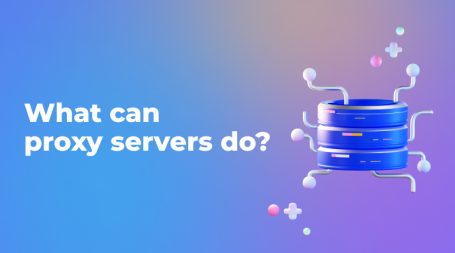In the last two decades, the internet has lost its core principles – freedom and privacy. Today, cyberspace is dominated by persistent tech companies that value the collection of user data more than digital and technological advancements.
While the vast information within the web keeps growing by the day, the digital landscape is centralized, and the most valuable technological insights are orbiting around Google, Meta, Amazon, and other tech giants. Our every browsing session is influenced by ads, suggestions, and personalized trackers to feed them information about our every decision.
Even though many new tools and IT solutions are undeniably convenient, the ratio of comfort and lost anonymity has never been more skewed. By masking the invasion of privacy with promises of perfect individual connections, we give ourselves up for complete control and manipulation through personalized browsing sessions. To make matters worse, these changes to our internet experience result in a heavily restricted browsing session, which keeps gullible web surfers out of trouble but handicaps the average user’s session with geo-restrictions, censorship, and invasion of privacy from third-party trackers.
If you want to get back control of your browsing experience, look no further. In this guide, we will cover one of the most powerful internet privacy tools – mobile proxies – and how they break the chains that shackle your browsing experience. Here, you will learn about the basic functionality of proxy servers, what makes mobile proxies different from other types, and relatable examples that will quickly bring back online freedom in a simple way that anyone can use. Keep reading to learn more about mobile proxies and how they pave the road to web anonymity.
How does a proxy server work?
While the term “proxy servers” may look intimidating at first glance, they are easy to set up and use. Let’s start with the basics. Most web connections follow the same principles: the data packets leave your device and leave the local area network through the default gateway. After that, the information follows the routing table to uncover paths to other routers, forming the best path towards your recipient. Then, if the connection request is accepted, the web server sends back the documents that render the site on your browser.
If we put proxy servers into the mix, an extra station is added to the route. Once the data enters the intermediary server, it changes its profile: for the remainder of the connection, it will travel under a new IP address, hence masking your network identity with that of a proxy server.
By connecting to a proxy server, you also change the approximate geo-location that is tied to your address. This way, they unblock a connection to a geo-blocked or censored website because the recipient can only see the identity of a proxy server.
Proxy server types for beginners
If you visit the website of any popular proxy provider, most of them categorize their services and pricing deals based on 3 main categories. Datacenter proxies, residential proxies, and mobile proxies.
Datacenter proxy server is stored in a special facility with high-end hardware and a fast web connection. They cause the smallest reduction in internet speed for the lowest price. It is a great option for beginner users who want to dabble with web privacy tools without paying too much money. Still, their biggest downside is the lowest level of provided privacy. While your main IP address will remain invisible for the targeted connections, data center proxies use public addresses that are not affiliated with internet service providers (ISPs). If recipients decide to inspect your connection request, the displayed IP address will not have an ISP, while most real user connections have an IP connected to the provider and your approximate location.
Residential and mobile proxies are like brothers, as the differences between them are minimal. These servers follow the same principle: instead of using separate servers, residential proxies share the addresses with real users connected to Wi-Fi, while mobile proxies get their IPs from cellular networks. They are more expensive, but having a connection to the ISP is essential for tasks that require an appropriate level of privacy. While they are more costly, with a quick search, you can find coupons that you can use to get discounts for proxy deals on Proxy.Coupons.
Real-Life Examples of Mobile Proxy Use
The anonymity and flexibility of mobile proxy connections provide valuable help for many use cases that are also applicable to casual browsing sessions. For example, if you plan to travel to a different country, but do not want to lose access to local websites, search recommendations, and other localized content, you can connect back to your original location through a mobile proxy connection. Your provider will offer the most suitable local address, as mobile proxy networks have millions of addresses with optimal distribution in many geolocations.
The same rules apply if you are looking for travel tickets. Many online shops show different prices for visitors from different regions. By using mobile proxy connections, you can check all regions that allow access to the site and pick the one with the cheapest possible deal.
Summary
The simplicity of mobile proxy connections does not overshadow their incredible applicability. With an easy setup and free trial deals from the best proxy suppliers, you can test the service and incorporate its powerful use into everyday life. While the examples described above are just the popular use cases for mobile proxies, with enough experience, you will see that their usability can stretch to many different niches. Learn to use mobile proxies today to regain your right to web privacy!















